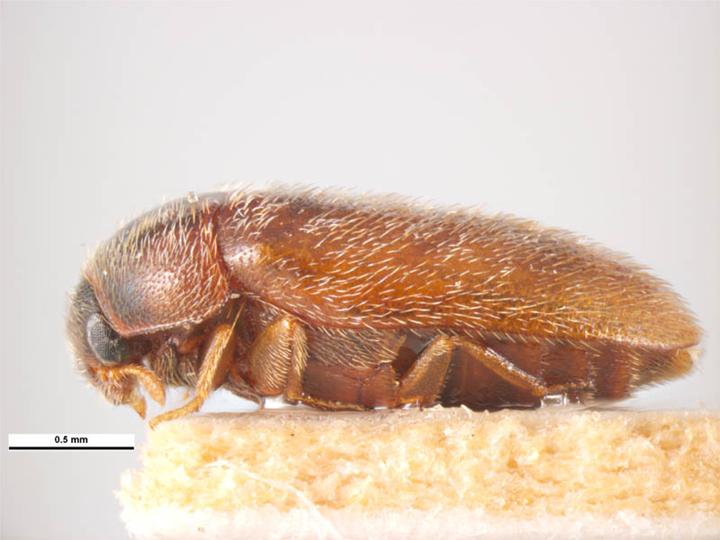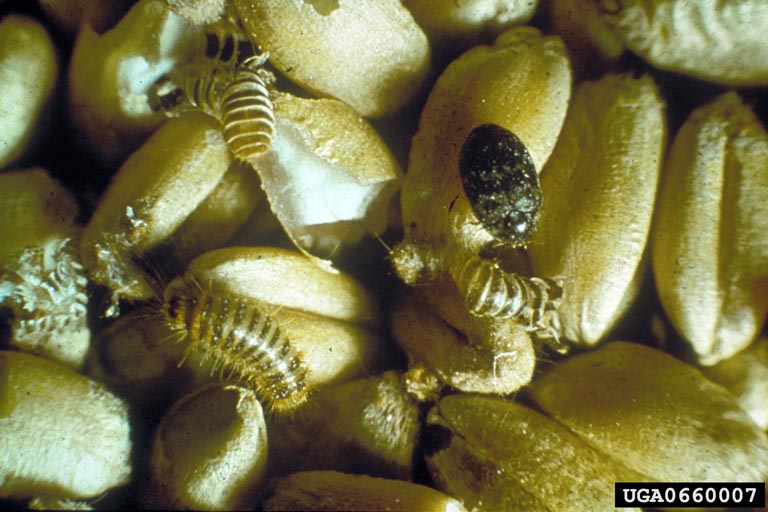Symptoms, description and lifecycle
Khapra beetle can cause losses of up to 75 per cent from direct feeding. Infested grain also becomes contaminated with beetles, cast skins and hairs from larvae, which can be a health risk and are more difficult to remove from grain storage structures and transport vessels.
Larvae can grow up to seven millimetres long, are reddish brown in colour and darken as they mature. They have characteristic long hairs all over their body, especially at the rear end and can survive without food for over 12 months.
Adults are two to three millimetres long and one to two millimetres wide, brownish in colour with a smooth oval shaped body. There are three transverse bands (markings) of pale colour hairs on the wing covers.
Organism
Trogoderma granarium
Conditions favouring pest
Khapra beetle prefers hot and dry conditions. Individuals are able to survive long periods of time of inactivity.
Host range
Khapra beetle is a pest of stored grain and dry foodstuffs worldwide. It can cause losses of up to 75 per cent from direct feeding. The larvae of Khapra beetles are serious pests of oilseeds, damaged cereals and, to a lesser extent, pulses. The adults rarely, if ever, eat or drink.
Method of spread
Khapra beetles are spread through the movement of stored grain and products or as contamination of seed, machinery and straw.
Confused with?
Other Trogoderma spp.
Khapra beetle is almost visually identical to the Warehouse beetle, Trogoderma variable, which is established in Australia.
Where?
Khapra beetle is found in Africa, India, Russia and many Middle Eastern countries.

Image 28. Adult Khapra beetle.
Source: Simon Hinkley & Ken Walker, Museum Victoria.

Image 29. Adult, larva, larval skins and damage to wheat grains.
Source: Ministry of Agriculture and Regional Development, Ministry of Agriculture and Regional of Development.
Bugwood.org


